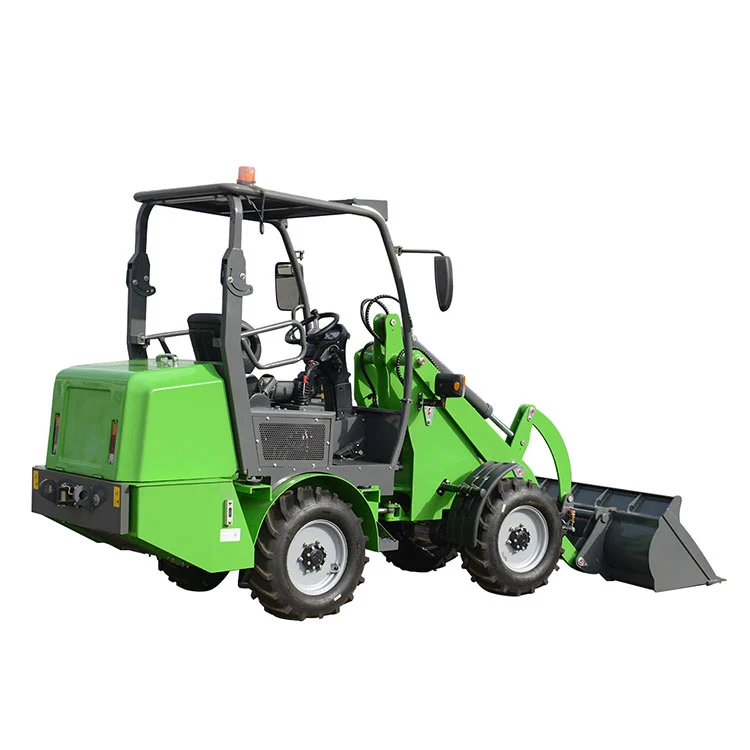The Intelligent and Revolutionary Development of the Modern Diesel Loader
2025-09-26
Table of Contents
-
Introduction: A New Era for a Workhorse
-
The Core of Intelligence: Key Technological Advancements
-
Unmatched Performance: Detailed Product Parameters
-
Applications Transformed by Smart Diesel Loaders
-
FAQ: Answering Your Questions on Modern Diesel Loaders
Introduction: A New Era for a Workhorse
For decades, the diesel loader has been the undisputed champion of construction sites, farms, and industrial yards. Known for its raw power and durability, it was a machine of brute force. Today, a revolutionary shift is underway. The modern Diesel Loader has evolved into an intelligent, efficient, and highly sophisticated piece of equipment. This transformation integrates advanced telematics, precision controls, and eco-conscious engineering, boosting productivity while significantly reducing operating costs and environmental impact. This isn't just an upgrade; it's a complete reimagining of what a loader can be.
The Core of Intelligence: Key Technological Advancements
The leap from a standard machine to an intelligent one is driven by several key technologies. These advancements work in concert to make the Diesel Loader safer, easier to operate, and more productive.
-
Integrated Telematics: Modern loaders come with built-in systems that provide real-time data on location, fuel consumption, idle times, and maintenance alerts. This allows fleet managers to optimize operations remotely.
-
Advanced Hydraulic Systems: Sophisticated load-sensing hydraulics deliver power precisely when and where it's needed. This eliminates wasted energy, resulting in smoother operation and significantly lower fuel consumption.
-
Operator-Assist Features: From self-leveling buckets to return-to-dig functions, these features automate complex tasks. They reduce operator fatigue, ensure consistent performance, and shorten cycle times.
-
Ergonomic Cab Design: The operator's environment is now a command center. Features include adjustable joystick controls, high-resolution touchscreen displays, and climate control, all designed to maximize comfort and efficiency during long shifts.
Unmatched Performance: Detailed Product Parameters
When selecting a modern Diesel Loader, understanding the technical specifications is crucial. The following parameters define its capabilities and suitability for specific tasks.
Key Performance Metrics List:
-
Operating Capacity: The maximum load the loader can safely lift to a specified height. This is a critical factor for productivity.
-
Horsepower (HP): The engine's power output, which determines the machine's ability to tackle heavy loads and challenging terrain.
-
Bucket Breakout Force: The force the loader can exert to pry material out of a pile. A higher breakout force means greater digging capability.
-
Tipping Load: The load at which the loader's rear wheels begin to lift off the ground, a key measure of stability.
-
Fuel Tank Capacity: Directly impacts how long the machine can operate between refueling stops.
Comparative Specification Table:
| Parameter | Model A (Standard Duty) | Model B (Heavy Duty) | Model C (Intelligent Premium) | Significance |
|---|---|---|---|---|
| Engine Power | 80 HP | 110 HP | 130 HP with Eco-Mode | Higher HP allows for heavier loads and faster cycle times. Eco-mode optimizes fuel use. |
| Operating Capacity | 2,200 kg | 3,500 kg | 4,000 kg | Determines the maximum weight the loader can handle, crucial for project planning. |
| Bucket Breakout Force | 5,500 kg | 7,800 kg | 9,200 kg | Essential for efficient loading of dense or compacted materials. |
| Advanced Features | Basic Telematics | Load-Sensing Hydraulics | Integrated Telematics, Auto-Leveling, Fleet Management | Intelligent features directly impact operational efficiency and cost savings. |
Applications Transformed by Smart Diesel Loaders
The intelligence built into today's diesel loaders has expanded their utility across various sectors.
-
Construction: Precision controls allow for delicate grading and finishing work, in addition to traditional heavy lifting and loading.
-
Agriculture: Efficiently handling feed, fertilizer, and harvested goods with minimal waste and reduced operator strain.
-
Warehousing and Logistics: Quick attachment systems (forks, booms) enable a single machine to perform multiple tasks, moving from loading trucks to stacking pallets seamlessly.
-
Snow Removal: Powerful and agile, these machines can clear large areas quickly, with features like auto-reverse allowing for continuous operation.
FAQ: Answering Your Questions on Modern Diesel Loaders
1. How does a modern Diesel Loader save on fuel costs?
Modern engines are designed for efficiency, and when combined with advanced load-sensing hydraulics, they only use the power required for the task. Telematics systems also help managers reduce unnecessary idling and optimize routes, leading to substantial fuel savings.
2. Are these intelligent loaders more difficult to maintain?
Quite the opposite. While they have sophisticated components, integrated diagnostics proactively alert operators and service teams to potential issues before they lead to downtime. This enables predictive maintenance, which is often simpler and cheaper than reactive repairs.
3. What is the primary advantage of the intelligent features for an operator?
The main advantages are reduced fatigue and increased productivity. Features like self-leveling and return-to-dig automate repetitive motions, allowing the operator to focus on precision and safety. The ergonomic cab design also ensures comfort, leading to higher output over a full workday.
If you are very interested in Shandong Heima Construction Machinery's products or have any questions, please feel free to contact us.


























